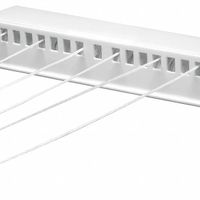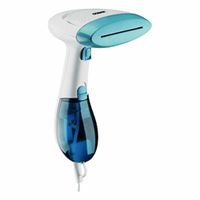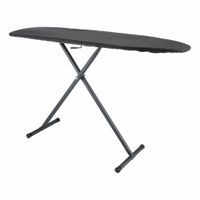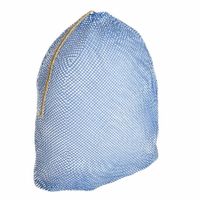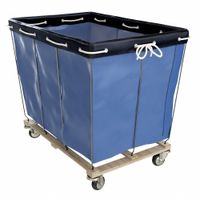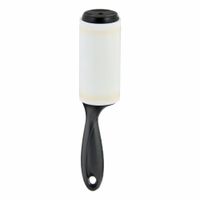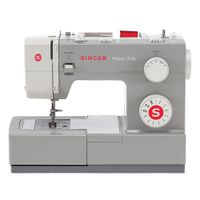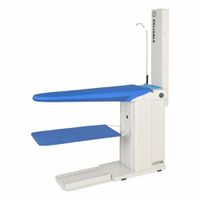Call +(254) 703 030 000 / 751 483 999 / 721 704 777
- Home
- Furnishings Appliances Hospitality
- Hospitality Supplies
- Housekeeping Supplies
- Laundry Supplies
.....Read More
Frequently Asked Questions
What is the best type of laundry cart for large facilities?
The best type of laundry cart for large facilities is a heavy-duty, multi-compartment cart with industrial-grade wheels. These carts are designed to handle high volumes of laundry efficiently and are built to withstand the rigors of constant use.
Key features to consider include:
1. **Capacity**: Opt for carts with a large capacity, typically over 20 bushels, to accommodate substantial loads, reducing the frequency of trips.
2. **Material**: Choose carts made from durable materials like stainless steel or high-density polyethylene. These materials resist corrosion and are easy to clean, ensuring longevity and hygiene.
3. **Compartments**: Multi-compartment designs allow for sorting laundry by type or destination, streamlining the process and improving efficiency.
4. **Mobility**: Industrial-grade, swivel casters with locking mechanisms provide smooth movement and stability, even on uneven surfaces. Pneumatic wheels are ideal for facilities with varied flooring.
5. **Ergonomics**: Look for carts with ergonomic handles and adjustable heights to reduce strain on workers, enhancing comfort and productivity.
6. **Accessories**: Consider carts with additional features like removable bags, lids, or shelves for added functionality and organization.
7. **Safety**: Ensure the cart has safety features such as rounded edges and secure fastenings to prevent accidents.
By focusing on these features, large facilities can select a laundry cart that maximizes efficiency, durability, and safety, ultimately improving the overall workflow and reducing operational costs.
How do I choose the right laundry hamper for my home?
1. **Size and Capacity**: Consider the amount of laundry your household generates. For larger families, opt for a bigger hamper or multiple hampers to accommodate the volume.
2. **Material**: Choose a material that suits your needs. Options include:
- **Plastic**: Durable and easy to clean.
- **Wicker**: Aesthetic and breathable but may require a liner.
- **Fabric**: Lightweight and collapsible, ideal for small spaces.
3. **Design and Style**: Match the hamper with your home decor. Options range from modern and sleek to rustic and traditional.
4. **Compartments**: If you prefer sorting laundry by color or type, consider a hamper with multiple compartments.
5. **Portability**: Look for features like handles or wheels if you need to move the hamper frequently.
6. **Ventilation**: Ensure the hamper has adequate ventilation to prevent odors and mildew.
7. **Space**: Consider where the hamper will be placed. For tight spaces, a tall, narrow hamper or a collapsible one might be ideal.
8. **Lid or No Lid**: Decide if you want a lid for a tidier appearance or an open-top for easy access.
9. **Budget**: Determine your budget and find a hamper that offers the best features within your price range.
10. **Ease of Cleaning**: Choose a hamper that is easy to clean, especially if it will be used for damp or soiled clothes.
11. **Durability**: Consider the durability of the material and construction, especially if the hamper will be heavily used.
12. **Eco-Friendliness**: If sustainability is important to you, look for hampers made from eco-friendly materials.
What are the benefits of using a garment steamer over an iron?
A garment steamer offers several benefits over a traditional iron:
1. **Ease of Use**: Steamers are generally easier to use as they require less manual effort. You simply hang the garment and run the steamer over it, eliminating the need for an ironing board.
2. **Time Efficiency**: Steamers heat up quickly and can remove wrinkles faster than irons, making them ideal for quick touch-ups.
3. **Versatility**: They are suitable for a wide range of fabrics, including delicate materials like silk, lace, and wool, which can be damaged by the high heat of an iron.
4. **Gentle on Fabrics**: Steamers reduce the risk of burning or scorching fabrics, as they do not make direct contact with the material.
5. **Odor and Germ Removal**: The steam can help eliminate odors and kill bacteria, providing a fresh and clean finish to garments.
6. **Portability**: Many steamers are compact and lightweight, making them convenient for travel and easy to store.
7. **No Shine Marks**: Unlike irons, steamers do not leave shiny marks on fabrics, which can occur when an iron is too hot or left in one spot for too long.
8. **Safe for Embellishments**: Steamers are ideal for clothes with embellishments, such as sequins or embroidery, as they do not press down on the fabric.
9. **Multi-Functional**: Besides clothes, steamers can be used on curtains, upholstery, and other household fabrics, offering more utility than a traditional iron.
10. **Reduced Risk of Damage**: With no direct contact, there's less risk of accidentally burning or damaging the fabric, making steamers a safer option for many users.
How do vacuum pressing tables work?
Vacuum pressing tables are specialized equipment used in garment manufacturing and tailoring to enhance the pressing process. They work by combining heat, moisture, and suction to achieve crisp, professional finishes on fabrics.
The table consists of a flat, perforated surface connected to a vacuum system. When a garment is placed on the table, the vacuum is activated, creating suction through the perforations. This suction holds the fabric in place, preventing it from shifting during pressing and ensuring even pressure distribution.
The pressing process typically involves the use of a steam iron. The steam penetrates the fabric, relaxing the fibers and making them more pliable. The heat from the iron then helps to set the fabric in the desired shape. The vacuum function plays a crucial role here by drawing out excess moisture and steam from the fabric, which speeds up the drying process and prevents watermarks or unwanted creases.
Additionally, many vacuum pressing tables are equipped with heating elements beneath the surface. This feature helps maintain a consistent temperature, further aiding in the drying and setting of the fabric. The combination of heat, steam, and vacuum ensures that the fabric is pressed smoothly and efficiently, with sharp creases and a polished appearance.
Overall, vacuum pressing tables enhance the quality and efficiency of the pressing process, making them invaluable in professional garment production and tailoring environments.
What is the most efficient way to use a drying rack?
To use a drying rack efficiently, start by selecting a well-ventilated area with good air circulation, such as near a window or fan. Spread out the clothes evenly on the rack, ensuring they do not overlap to maximize airflow and speed up drying. Hang larger items like towels or sheets on the outer edges where they can catch more air, and place smaller items like socks or underwear in the middle.
For items that can be hung, use hangers to increase space and airflow. Rotate the clothes periodically to ensure even drying and prevent damp spots. If possible, position the rack in direct sunlight to take advantage of natural heat, but be cautious with colored fabrics to avoid fading.
Consider using a dehumidifier or fan in the room to enhance air movement and reduce drying time. If drying indoors, keep windows slightly open to allow moisture to escape. For delicate items, lay them flat on the rack to maintain their shape.
Finally, avoid overloading the rack, as this can impede airflow and prolong drying time. By following these steps, you can efficiently use a drying rack to dry clothes quickly and effectively.
How do I maintain my sewing machine for optimal performance?
1. **Regular Cleaning**: Remove lint and dust after each use. Use a small brush or compressed air to clean the bobbin area, feed dogs, and under the needle plate.
2. **Proper Oiling**: Refer to your machine’s manual for oiling instructions. Use sewing machine oil and apply it to the designated areas to prevent friction and wear.
3. **Change Needles Frequently**: Replace the needle after every 8-10 hours of sewing or when switching fabric types to prevent fabric damage and ensure smooth stitching.
4. **Check Tension Settings**: Regularly inspect and adjust the thread tension to avoid loose or tight stitches. Test on scrap fabric before starting a project.
5. **Inspect Bobbin and Bobbin Case**: Ensure the bobbin is wound evenly and the bobbin case is free of lint. Use the correct bobbin size for your machine.
6. **Use Quality Thread**: Invest in good-quality thread to prevent lint buildup and breakage, which can affect machine performance.
7. **Keep Machine Covered**: When not in use, cover your machine to protect it from dust and environmental damage.
8. **Check Electrical Components**: Inspect the power cord and foot pedal for wear and tear. Replace if necessary to avoid electrical issues.
9. **Regular Servicing**: Have your machine professionally serviced annually or as recommended by the manufacturer to address any mechanical issues.
10. **Store Properly**: Keep your machine in a dry, stable environment to prevent rust and damage.
11. **Follow Manufacturer’s Guidelines**: Always refer to the user manual for specific maintenance instructions and troubleshooting tips.
12. **Avoid Overloading**: Do not force the machine through thick fabrics or multiple layers beyond its capacity to prevent motor strain.
What are the best lint rollers for pet hair removal?
1. **Scotch-Brite Lint Roller**: Known for its strong adhesive sheets, it effectively picks up pet hair from various surfaces. The ergonomic handle makes it easy to use, and the sheets tear off cleanly.
2. **Evercare Pet Plus Mega Lint Roller**: This roller features extra sticky sheets designed specifically for pet hair. It has a large surface area, making it ideal for quick clean-ups on furniture and clothing.
3. **ChomChom Roller**: A reusable option that doesn't require adhesive sheets. It uses a unique brush system to trap pet hair in a chamber, making it eco-friendly and cost-effective over time.
4. **OXO Good Grips Furlifter**: This is a self-cleaning lint brush that captures pet hair and stores it in a base. It's reusable and works well on furniture and clothing.
5. **Bissell Pet Hair Eraser Roller**: With its extra sticky sheets, this roller is designed to tackle stubborn pet hair. It also features a comfortable grip handle for easy use.
6. **iLifeTech Reusable Lint Roller**: Made of a sticky gel material, this roller is washable and reusable. It's effective on pet hair and can be used on various surfaces.
7. **Fur-Zoff Pet Hair Remover**: Not a traditional roller, but a pumice-like tool that effectively removes pet hair from car interiors, carpets, and upholstery.
8. **PetLovers Extra Sticky Lint Roller**: Offers extra sticky sheets that are great for picking up pet hair. It comes with a sturdy handle and is easy to use.
9. **Magictec Lint Roller**: Features a strong adhesive and a comfortable handle. It's effective on pet hair and comes with multiple refills.
10. **DELOMO Pet Hair Remover Roller**: A reusable roller that works without adhesive sheets. It uses a fabric brush to collect pet hair and is easy to clean.
